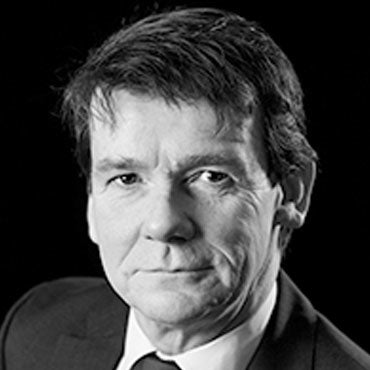The History of Local Anaesthesia
Share
- Details
- Text
- Audio
- Downloads
- Extra Reading
Most equate ‘anaesthesia’ with general anaesthesia. This is likely because the introduction of general anaesthesia (1847) pre-dated that of local anaesthesia (1884). The drugs used for these first demonstrations, ether and cocaine, had been in existence for centuries before pioneers made the mental leap between the knowledge that they could cause – respectively – sedation and numbness, and the potential for these effects to be used for the benefit of humanity. Dr Harrop-Griffiths will put a humorous spin on a fascinating story.
Download Text
6 February 2017
The History of Local Anaesthesia
Dr William Harrop-Griffiths
Anaesthesia and World Anaesthesia Day
If you say the word “anaesthesia”, most people will immediately conjure up an image of an unconscious patient lying upon an operating table awaiting the surgeon’s knife. “Anaesthesia” is a word derived from the Greek anaisthesia, denoting without sensation, that was suggested by Oliver Wendell Holmes, Professor of Anatomy and Physiology at Dartmouth College, USA, to William Morton, the person who is usually accepted as having given the first anaesthetic using ether inhalation on 16th October 1846 in the operating theatre of Massachusetts General Hospital. Holmes wrote the letter to Morton on 21st November 1846, and in it appreciated the urgency of giving this new technique a name in saying “I would have a name pretty soon”, as it would be “repeated by the tongues of every civilized race of mankind”. This short introduction should make clear why (A) we celebrate World Anaesthesia Day every year on 16th October and (B) why we call it World Anaesthesia Day. As for any discovery or event that changed the world, it is highly desirable and very satisfying to be able to identify a particular day on which it incontrovertibly happened for the first time, and 16th October 1846 was that day. Or was it?
It was certainly the day on which William Thomas Green Morton, a dentist, gave ether to Edward Gilbert Abbott to render him unconscious while the surgeon John Collins Warren excised a tumour from his neck, after which Warren announced to the crowd around him “Gentlemen, this is no humbug!”, but it was not the first time Morton had given ether successfully to a patient for a surgical procedure. That happened on 30th September 1846, some two weeks earlier. The patient was Eben Frost; Morton removed one of his teeth under ether anaesthesia. It was not even the first time someone had attempted to demonstrate anaesthesia with an inhalational drug in public. That had happened on 20th January 1845 when another dentist, Horace Wells, had given nitrous oxide – laughing gas as it is often called – to a patient undergoing surgery to be performed by the same John Collins Warren. This demonstration had been an unmitigated disaster, after which Wells’s career spiralled downwards, tragically ending in his suicide, and led Warren to think the idea of inhalational anaesthesia to be humbug, hence his comment at Morton’s successful demonstration on 18th October 1846. However, even that was not the first successful ether anaesthetic. This was probably given by an American surgeon called Crawford W Long on 30th March 1842 to a patient who underwent a leg amputation performed by Long himself. It seems likely that Long had been giving successful ether anaesthesia for some time but chose not to publicise the fact – perhaps for commercial reasons. However, this is almost certainly not the first time that a human being had been rendered unconscious for the purpose of making them unaware of a therapeutic surgical procedure. Man has known for centuries of the sedative effects of opium, alcohol, cannabis, hyoscine and mandrake, and combinations of these agents had been used as long ago as the second Century AD to render people unconscious.
The history of local anaesthesia
Some of you will have spotted that so far I have only been talking about general anaesthesia, whereas this talk is meant to be about the history of local anaesthesia. However, this general anaesthetic preamble has two aims: firstly, to make the case that history does not reward and acknowledge the first person to achieve a great feat, but the first person to make known the fact that they have achieved a great feat. Secondly, that general anaesthesia has no fixed start, no “Eureka moment”, no “Big Bang”, no identifiable one day on which to base a World Anaesthesia Day. However, it can be argued that things are different for local anaesthesia, in which parts of the body are rendered insensate rather than the whole. I offer you a date, a drug, a person and an operation: 11th September 1884, cocaine, a Czech-born ophthalmologist called Carl Koller, and an operation for glaucoma, or increased pressure in the eyeball. I am now going to take you on a journey through what I think is the fascinating history that led up to this Eureka moment and share with you some of my frustration that local anaesthesia could easily have been publicly demonstrated before the use of ether, and that if it had, we would imagine a conscious patient when we use the word “anaesthesia”, not an unconscious one.
Our story starts in the jungles of South America, where, amidst the trees, creepers and streams there grew an unremarkable little plant with red berries that eventually came to be called “Erythryoxylon Coca” by botanists. We know that the natives chewed the leaves of the Coca plant to increase their energy and decrease their appetite, and we know that the practice was ancient: traces of the chemicals derived from the plant have been found in the hair of preserved mummies centuries old. Those involved in the conquest of the Inca Empire led by Francisco Pizarro in the 15th Century noted the chewing of coca leaves by natives and remarked upon its euphoric and energising effects, although they did not comment on the fact that it makes your lips go numb when you chew coca leaves. A priest accompanying the conquistadors, Father Bernabe Cobo, author of a 43-volme history of the New World, wrote in the 16th Century:
“And this happened to me once, that I repaired to a barber to have a tooth pulled, that had worked loose and ached, and the barber told me how he would be sorry to pull it because it was sound and healthy. A monk friend of mine who happened to be there and overhearing advised me to chew for a few days on Coca. As I did, indeed, soon to find my toothache gone”.
Coca and circumnavigation
Although all the information and knowledge existed that would allow someone to make the great mental leap between the numbness caused by Coca and its potential medical uses, it was not yet time for local anaesthesia’s Eureka moment. Our story now moves forward to a frigate of the Austrian navy called the Novara, which circumnavigated the globe in 1857 – 1859. Those who are interested in naval history may wish to learn that the ship was built in Venice in 1843 and was originally called the Minerva. It was 50 m long and 14 m wide, and accommodated 30 officers and 315 men. The Austrian nation is so rightly proud of the achievements of the Novara that its image appears on the country’s 20 Euro coin. At this point, I suspect that many in the audience will question, as I did, the necessity for a navy if you are, like Austria, completely landlocked. The necessity derives from the fact that an important waterway passes through the country: the Danube, which has its source in Germany and flows to the Black Sea. It is navigable during its course through Austria. This creates a source of commerce in peace and a security threat during times of war, hence the need for a navy. The Austrian navy’s most famous officer has nothing whatsoever to do with the history of local anaesthesia, but he gave me the opportunity when giving this talk in Vienna to show an image of him and ask the audience who he was. There was silence. “He was Georg Ritter von Trapp, who was so obsessed with submarines that he married the daughter of Robert Whitehead, the inventor of the torpedo”. More blank looks. “His first wife died, leaving him on his own to look after 10 children. He took on a novice nun called Maria to help him look after the children, fell in love with her, and the rest is musical history”. In spite of my dancing around the stage with my arms held out mouthing the words “The Hills are Alive…”, I still got no response. I learned that the Sound of Music is not a firm favourite in Austria. However, we digress.
On board the Novara was a young scientist called Carl Scherzer. His boss was the redoubtable Friedrich Wohler, Professor of Chemistry at the University of Göttingen, the first synthesiser of urea and calcium carbide, and the discoverer of aluminium, silicon, beryllium and titanium. Wohler asked Scherzer to collect some coca leaves while on his circumnavigation and to bring them back to him. This Scherzer did, and Wohler gave the leaves to another one of his young scientists, Albert Niemann. It was Niemann who isolated the active principle in the leaves in 1860, and it was he who gave it its name: cocaine. He even reported that it made his lips go numb, but he too was unable to make the mental leap and arrive at the Eureka moment. Niemann died shortly after isolating cocaine, and his work was continued by Wilhelm Lossen, who determined the correct molecular formula of cocaine in 1865: C17H21NO4. He even reported that the substance made his lips go numb, but he too could not create the link and reach the Eureka moment. Richard Willstatter determined the precise chemical structure of cocaine but he too failed to make the mental leap. It is here that the story of cocaine strays from the scientific to the slightly fantastical. Live plants had arrived in Europe by the mid-1850s, and a number of people started experimenting with it.
Paolo Mantegazza was an Italian chemist who devised his own purification process for cocaine in 1859, and he proceeded to test the substance on animals and on himself. It appears that he was particularly keen on experimenting on himself, for he wrote at the time: “I sneered at the poor mortals condemned to live in this valley of tears while I, carried on the wings of two leaves of coca, went flying through the spaces of 77,438 words, each one more splendid than the one before. An hour later, I was sufficiently calm to write these words in a steady hand: God is unjust because he made man incapable of sustaining the effect of coca all lifelong. I would rather have a life span of ten years with coca than one of 10,000,000,000,000,000,000,000 centuries without coca”. We will put him down as an ardent fan, then. While Mantegazza saw cocaine as a tool for experimentation, others spotted its commercial possibilities.
Cocaine and wine
Angelo Mariani grew cocaine in the greenhouse of his small house in France and used it to develop a drink. He macerated the leaves and mixed them with wine, producing a “delicious and invigorating beverage” that contained really rather a lot of cocaine. He perfected his drink in 1863 and called it Vin Mariani. He was a shrewd businessman, and used posters to publicise his product, which became a commercial success. He was also astute enough to appreciate the value of celebrity endorsement. The reigning pontiff at the time, Pope Leo XIII, became fond of Vin Mariani, and was said to secrete a bottle of the stuff on his person while on official engagements. Indeed, so much did he appreciate the beneficial effects of the wine that he awarded it a papal Gold Medal. Mariani used this fact extensively in his publicity for his product.
The success of Vin Mariani drew others towards the production of invigorating and cocaine-containing beverages. John Pemberton, an American Civil War veteran, pharmacist and morphine addict copied Mariani’s product, calling it “French Wine of Coca”. However, local restrictions on the use of alcohol forced him to take the wine out of the blend, and he searched for another substance that could give it a bit of a “bite”. He settled on the use of cola nuts to flavour the drink, and in 1886 developed the product that was to become a global brand: Coca Cola.
Sigmund Freud’s role in the history of local anaesthesia
We return now to medical uses of cocaine and to the remarkable story of how we arrive at the Eureka moment for cocaine and local anaesthesia. Two young doctors were working together in the Wiener Allgemeines Krankenhaus – the Vienna General Hospital. One was Carl Koller - a Czech-born trainee ophthalmologist – and the other was Sigmund Freud. Yes – that Sigmund Freud, the father of psychoanalysis. Before he became interested in psychoanalysis, he was interested in addiction, and in particular how to solve the then increasing problem of addiction to morphine. His hope was that he could use cocaine to wean people off morphine and was conducting experiments with Koller into the properties of cocaine, while working on a review of the properties and usage of the drug. His review, entitled “Uber Coca”, was published in 1884. The review noted the numbing effects of cocaine on tissues of the body and suggested further experiments on this aspect of the drug’s actions. However, he embarked on a trip with his then fiancée and later wife Martha Bernays before pursuing this line of enquiry and left the laboratory to his friend Carl Koller. Koller was fascinated by the prospect of using chemicals to make the eye go numb to allow surgery on the awake patient, and had tested a wide variety of substances on an equally wide variety of animals but all with no success. While Freud was away, this is reported to have happened:
“A colleague, Dr Engel, placed some cocaine in his mouth from the point of his penknife”.
“My, how that numbs the lips” he remarked.
Koller replied “Yes, that has been noticed by everyone who has eaten it”.
And then – after so many years and so many near misses – the Eureka moment struck, and Koller realised that he was carrying in his pocket the local anaesthetic that he and many others had been searching for.
He tried it on some laboratory animals, and it seemed to work – they did not react to painful stimuli once it had been put in their eyes. He then tried it on himself – and he felt no pain. And so, on 11th September 1884, Koller performed the first operation under local anaesthetic – a procedure to treat increased pressure in the eyeball – glaucoma. The operation was a success and the patient reported no pain. The German Ophthalmological Society was holding a major meeting four days later in Heidelberg, and Koller was keen to go there to announce his great discovery. However, he was not a wealthy man and lacked the funds to make the journey, so he sent a colleague, Josef Brettauer, to read his paper to the Society’s congress, which he did on 15th September 1884. A month later, on 17th October 1884, Koller read his paper to the Medical Society of Vienna at the Billrothhaus and, eight days later, his paper on the use of cocaine as a local anaesthetic was published in the Wiener Medizinische Wochenschrift – the Vienna Medical Weekly.
Halsted’s addictions
News spread like wildfire. Nineteenth Century physicians were not subject to the restrictions on experimentation with new drugs to which we modern day doctors – very reasonably – are subject. Within weeks, American surgeons William Stewart Halsted and Richard John Hall were performing the first blocks of individual nerves using cocaine. Halsted, one of the fathers of American surgery, was a fascinating character. He reported his experiences of blocking nerves with cocaine in the New York Medical Journal on 12th September 1885. His description was so disjointed and overwrought that it could only have been written under the influence of the drug he was using for his clinical experiments. He had fallen into the same trap that had caught Paolo Mantegazza – by heroically enlisting himself as a human subject, he had transformed himself into an addict. In 1886, Halsted tried to wean himself off cocaine with the agent that was in popular use for this purpose at the time, a practice that may have been drawn from Freud’s suggestions: morphine. Halsted rapidly became doubly addicted. However, a clever and resourceful man, he managed to convince his colleagues that he was not an addict and was appointed Chief Surgeon at the then new Johns Hopkins Hospital in 1889, and its Professor of Surgery in 1892. Contemporary accounts describe him as being moody, elusive, sarcastic and prone to leaving operations half way through, using excuses such as chest pain or uncontrollable shaking of his hands. It is likely that he remained a functional addict for the rest of his professional career. Other interesting facts about Halsted include that he had a passion for growing dahlias, ate coddled guinea hen eggs every morning for breakfast, and has all his laundry sent to Paris to be cleaned and pressed.
Meanwhile, what was happening with the inventor – or perhaps discoverer – of local anaesthesia? Carl Koller was forced to leave Vienna in 1885 not – as is often reported – because of anti-Semitism, but because he took some bad decisions. A colleague, Dr Fritz Zinner, insulted him in public, after which Koller slapped him in the face. The inevitable result of this exchange was a duel with heavy sabres, during which Koller was unharmed but Zinner suffered two deep gashes. It is perhaps not surprising that Koller failed in his application to become a Consultant Ophthalmic Surgeon in Vienna, and he opted to quit and go to live in the USA, where he became a successful New York ophthalmologist.
While Halsted was developing the early nerve blocks in the USA, other surgeons such as Paul Reclus, Carl Ludwig Schleich and Maximilian Oberst were popularising the use of cocaine in local infiltration anaesthesia. If I am to complete this story of the early history of local anaesthesia, I need to describe how its other main use developed – its injection into the spine, close to the nerves emerging from the spinal cord, to produce anaesthesia in the lower half of the body – now called spinal anaesthesia.
Bier and spinal anaesthesia
The first spinal anaesthetic was given in 1898 and was the idea of a German surgeon called August Bier. Bier was working in Kiel in Germany with another clinician called Heinrich Quincke. Quincke was pioneering the use of spinal taps as a diagnostic tool and spinal injections to treat tuberculosis, while Bier was using cocaine to produce anaesthesia by injecting it around nerves. It was Bier who put two and two together and developed the concept that the cocaine could be injected into the spine to create anaesthesia of the lower half of the body, and so it was that on 24th August 1898, Bier and his laboratory assistant, August Hildebrandt, attempted spinal injections of cocaine on each other. Hildebrandt first attempted to perform a spinal on Bier. The needle was large, and pushing it into Bier’s back proved both difficult and painful. Hildebrandt drew up some cocaine into a syringe but had difficulty connecting it to the needle, with the result that a lot of the cocaine spilt, along with quite a lot of the clear fluid that surrounds the spinal cord and the brain – the cerebrospinal fluid or CSF. Hildebrandt had tried to inject 5 ml of a 1% solution of cocaine but not enough had been injected into Bier’s CSF to produce anaesthesia. However, because a lot of Bier’s CSF had leaked out, he was starting to develop a severe headache, something that is now know to be a complication of CSF leakage but was unknown as such then.
Now it was Bier’s turn to perform a spinal injection on Hildebrandt. With a sore back and a throbbing head, the expert surgeon picked up a needle and placed it into the correct space in Hildebrandt’s back at the first attempt, then injected the cocaine without leakage. After some five minutes, it was time to test for anaesthesia. Bier pinched the skin of his leg with is fingernails. Hildebrandt felt nothing. He then hit his shin with a hammer. Nothing. He then stubbed out a burning cigar on his thigh, pulled out a pubic hair and lastly gave is testicles a very firm squeeze. Hildebrandt was blissfully insensate, and they had between them invented spinal anaesthesia, currently the safest and most popular way to provide anaesthesia for Caesarean section and used throughout the world for this and other purposes.
Bier’s contributions did not end with spinal anaesthesia. He invented intravenous regional anaesthesia, which is still to this day called “Bier’s Block”. He also used his anatomical knowledge to upgrade the military helmet in use in Germany during the early part of the First World War – the pikelhaube – into a steel helmet whose shape has been used to produce almost all military helmets since then – the stahlhelm.
Many others contributed and continue to contribute to the history of local anaesthesia, but with the discovery of topical anaesthesia by Carl Koller, the development of nerve and nerve trunk blocks by Halsted and others, and the invention of spinal anaesthesia by Bier, I will draw things to a close by revealing that I have not been completely honest with you. I started by deconstructing 16th October 1846 as the day on which general anaesthesia was first performed while claiming to you that 11th September 1884 was the clearly identifiable day on which local anaesthesia was first used to allow painless surgery. However, this is not the full truth – probably.
Was Koller really the first?
Vassily von Anrep was a Russian doctor who had experimented with cocaine, injecting it into rats, dogs, cats, rabbits, pigeons and himself, and who published a paper in 1880 that suggested its use as a local anaesthetic. It is likely that he used cocaine as a local anaesthetic for surgical procedures before Koller but – importantly – he did not publish his experiences until after Koller – in a Russian journal published on 15th November 1884. Indeed, he mentions Koller in that article.
Invention or discovery?
I cannot therefore in all honesty claim that local anaesthesia has a more clearly identifiable first use than general anaesthesia, and I return to the theme I set out at the start of my talk: that history does not always reward and acknowledge the first person to achieve a great feat, but the first person to make known the fact that they have achieved a great feat. Further, I would say that the uses of ether and cocaine to take away the pain that humans had suffered for centuries during surgery were not inventions but discoveries. It was arguably inevitable that at some point in human evolution, someone, somewhere would have inhaled ether or injected cocaine and produced insensibility and – importantly - appreciated the medical potential of the discoveries. Although it is worthy of note that the people credited with the discoveries were Morton and Koller, if they had not used the drugs and publicised their use, then someone else would have. There was always going to be a Eureka moment – or two - at some point. What tantalises me as a dyed-in-the-wool and fanatical local anaesthetist is that it was by mere chance that the naissance of general anaesthesia preceded the introduction of local anaesthesia by some 38 years, when it could easily have been the other way round if someone, somewhere had made the link between numb lips and surgical anaesthesia. What would have happened if local anaesthesia had got in there first? Had that been the way history transpired, and I said the word “anaesthesia”, perhaps you would not immediately think of an unconscious patient but one who was conscious. We might have lived in a world in which the accepted norm is local anaesthesia, with general anaesthesia an option chosen by only a few. However, sadly for me and my fellow local anaesthetists, that is not the case, and I must accept that general anaesthesia predates local anaesthesia, although its history – in my opinion at least - is nothing like as interesting.
© Dr William Harrop-Griffiths, 2017
This event was on Mon, 06 Feb 2017
Support Gresham
Gresham College has offered an outstanding education to the public free of charge for over 400 years. Today, Gresham College plays an important role in fostering a love of learning and a greater understanding of ourselves and the world around us. Your donation will help to widen our reach and to broaden our audience, allowing more people to benefit from a high-quality education from some of the brightest minds.


 Login
Login







